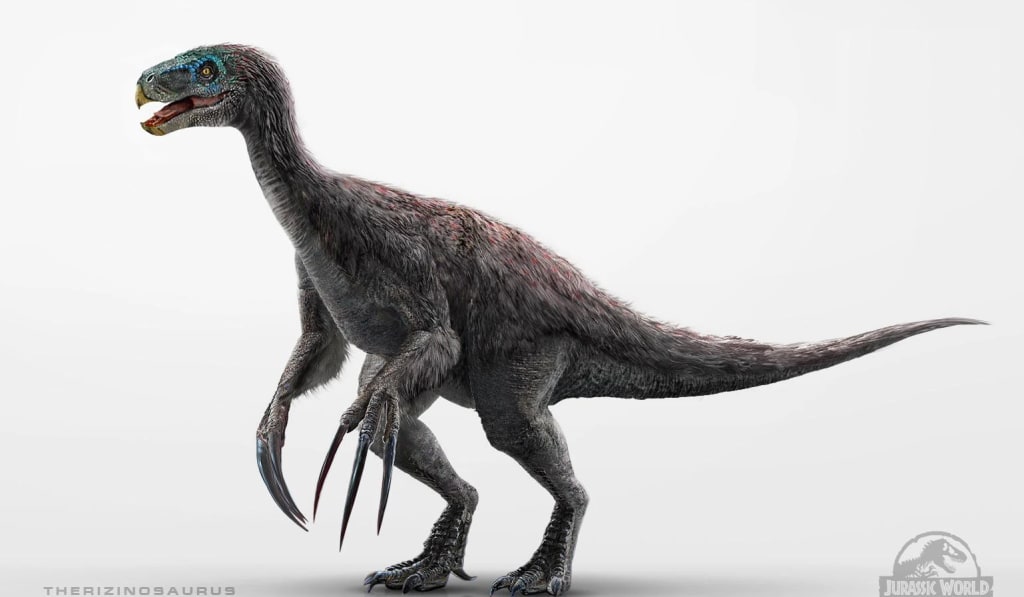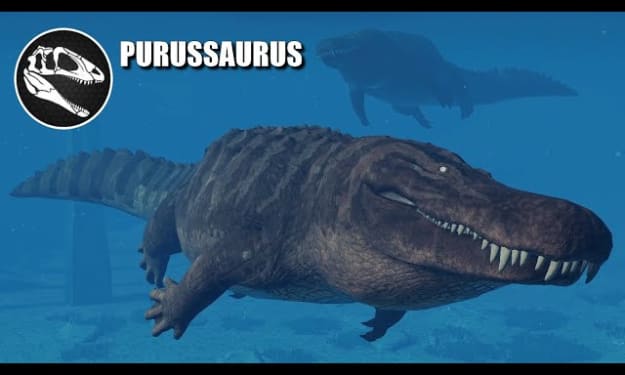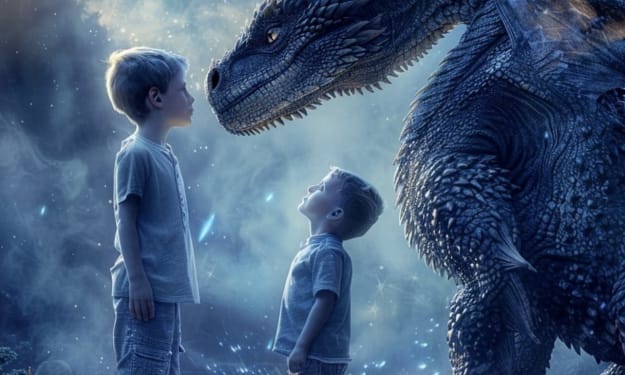Destructive Creatures You'll Absolutely love To Know Are Wiped out; Chapter 3
The world's brimming with a few startling animals who'd experience no difficulty making a fast dinner out of us people. However, as frightening a few creatures today might appear, there once existed considerably greater, badder, and way additional unnerving monsters

Number 6, Therizinosaurus.
Presently, the ground sloth might have had a few long hooks,
yet, those aren't anything looked at
to what the Therizinosaurus wore.
The 'sickle reptile' as it was known,
lived in Asia around quite a while back.
These dinos could develop to a lanky 16 feet tall.
Yet, the most startling thing about the Therizinosaurus
wasn't its level, yet its extensive hooks.
These terrible young men extended more than one and a half feet long,
making them the longest hooks of any creature ever.
At the point when these folks weren't imitating
Edward Scissorhands,
they were utilizing their extensive limbs
to pull vegetation reachable.
Regardless of their insane hooks,
The fact that they were rigorously herbivores makes it acknowledged.
This is down to their bipedal position,
which like different herbivores of the time
assisted them with venturing further up into trees.
Indeed, even still, I would have zero desire to get into a battle
with one of these things
thrashing their passing hooks at me.
Unfortunately, as far as they might be concerned, the Therizinosaurus is accepted
to have died in the K-T mass annihilation occasion.
Yet, fortunately, their long-ripped at inheritance
still lives on today.
Number 5, Platybelodon.
As we've seen, a few ancient creature predecessors
look pretty strange, and that is most certainly the situation
with the Platybelodon.
This goliath warm blooded creature lived in Asia, Africa, and North America
between a long time back.
They're a variety of bigger herbivorous proboscidean well evolved creatures
related, somewhat clearly,
to the advanced elephant.
However, close by their trunk,
Platybelodons had an unusual jaw that extended out under.
Fitted on the foundation of this lower extremity
were a couple of enlarged tusks,
which went about as adjusted incisors.
The key inquiry is, what's the utilization of having a spork
fitted to your mouth?
It's been more than once envisioned
as the lower half of a drawn out mouth,
lodging a long tongue.
Be that as it may, in 1992, scientist David Lambert
hypothesized that the Platybelodon benefited from plants
also, branches by removing them
with their helpful apparatus.
They might look more entertaining than undermining,
however, present day elephants kill up to 500 people consistently,
that is without a meaty spork dangling from their mouth.
Who knows the harm these elephant-nearby creatures
could do with that inquisitive cutlery extremity?
Number 4, Quetzalcoatlus.
Presently, the Quetzalcoatlus was a flying reptile,
which was alive nearly a long time back.
Also, in the wake of taking one glance at these winged bad dreams,
I wish they'd lived significantly further back in time.
There aren't numerous things really startling
than the possibility of having a 16-foot-tall reptilian stork
chasing you down.
These dread likewise accompanied a 36 foot wingspan,
making it the biggest flying animal of all time.
For some specific situation, the greatest wingspan tracked down today
is the 12 foot reach of a meandering gooney bird.
You can envision these ungainly goliaths skimming
the seas off the shoreline of North America in search
of their next off-putting dinner.
Be that as it may, Quetzalcoatlus fossils were tracked down ashore,
250 miles from shores,
without any sign of any huge streams or lakes close by
during the Cretaceous time frame, in which they lived.
All things considered, it's accepted that these birds chowed down
ashore creatures.
Their long, dainty chopstick-like jaws
made them compelling at pinpointing and culling up
more modest dinosaurs and gulping down them.
Man, and I considered birds prey were threatening.
These folks ceased to exist alongside the Therizinosaurus
during a mass termination occasion quite a while back.
Thus, fortunately, we don't need to keep an eye out
for any giraffe-sized flying reptiles
attempting to chug us down today.
Number 3, Rhamphorhynchus.
Yet, the winged bad dreams aren't finished.
This fluttering trepidation is known as a Rhamphorhynchus,
a flying reptile that took off the skies of Europe and Africa,
somewhere in the range of quite a while back.
In contrast to the Quetzalcoatlus,
these folks weren't honored with extraordinary size.
Their wingspan was around six-feet-in length,
while their all out body length was just 20 inches long,
making them pigeon-size, though with more extensive wings.
However, what they needed size,
they more than compensate for in fear,
since the jaws of Rhamphorhynchus
were loaded up with needle-like teeth.
Presently, it might seem as though they lost a battle with a thistle shrubbery,
be that as it may, these startling teeth filled a significant need.
Furthermore, that object was to help these avaricious reptiles
get fish by plunge taking care of.
At the point when the Rhamphorhynchus saw its prey,
it would swim simply over the water
what's more, bring down its spiky bill in, spearing and getting
the very tricky fish simultaneously.
Also, with the prey pierced,
the Rhamphorhynchus would've gulped it down in one.
In the event that these folks at any point supernaturally return from elimination,
just remember...never hand feed them.
Number 2, Livyatan.
We've brought a profound plunge into some
of the additional alarming things you can track down in the water,
yet, outwardly, not many are just about as startling as the Livyatan.
This 55-foot-long class of flesh eating sperm whale
managed the seas off South America
around a long time back.
In the event that its size alone wasn't sufficiently overwhelming,
they were additionally fitted
with more than 40, 1 foot-2-inch-long teeth
on their upper and lower jaws.
With these, they could undoubtedly destroy their prey,
providing them with the biggest gnawing teeth of any creature
to have at any point lived.
Obviously, Livyatan ate essentially
any enormous marine life, however their go-to feast
was 20 to 30 foot baleen whales.
What's more, for every one of their teeth,
The fact that these homicide transports makes it acknowledged
pursued with their temple.
They would've moved toward their prey from under,
prior to crushing into them, similar to a battering ram,
deadening their dinner simultaneously.
In any case, that fat temple might have served another capability as well.
Likewise with current sperm whales, the Livyatan is accepted
to have had a spermaceti organ.
Assuming that it has a similar capability as it does today,
these carnivores would've utilized it
to discharge high recurrence sounds,
acoustically staggering their prey.
At last, the extreme sound openness
would close down the normalphysical processes of the objective.
What a best approach.
The Livyatan went wiped out quite a long time back,
because of a cooling occasion toward the conclusion of the Miocene Age,
causing a decrease in their food populace.
In this way, sit back and relax, you can in any case cruise the oceans
without agonizing over Moby Dick's greater,
harder sibling bringing you down.
Number 1, Megalodon.
Goodness, you figured nothing could beat
the could of the Livyatan?
Indeed, let me acquaint you with the Megalodon,
a types of mackerel shark that embarrasses Jaws.
This 50-foot-long fish was north of three times the length
of an incredible white shark.
What's more, these bulky young men were weighty as well,
tipping the scales at around 70 tons,
which is identical to about 10 elephants.
In addition, their jaws could traverse north of six feet wide,
effectively sufficient space for a whole human.
Furthermore, inside their throat you'd find 276 enormous seven-inch,
well honed teeth, prepared for destroying prey.
In the event that that wasn't sufficient, these super sharks are assessed
to have had a nibble power of 40,000 pounds for every square inch.
That is multiple times all the more impressive
than the chomp power of an incredible white.
Swimming all through the world's seas
between 20 million and 3.6 a long time back,
they would've needed to contend
with the large estimated Livyatan for food.
Assuming they battled, you'd anticipate The Meg
to leave a respectable mark on the Livyatan's fat.
In any case, the whale's somewhat greater size
also, shrewd utilization of acoustic dazzling
may have given it an edge.
However, who can say for sure?
One thing's without a doubt,
The Meg would gobble a human up like a sardine!
All in all, how did this uber hunter go wiped out?
Indeed, the environment changed emphatically
around 3.6 a long time back.
Temperatures decreased, and thus, the warm-water regions,
where the sharks flourished became diminished,
in the long run prompting this variety's termination.
What's more, you will scarcely believe, I'm super feeling better.
In the event that you could bring one of these frightening abhorrences
resurrected, which could it be?
Tell me in the remarks underneath.





Comments
There are no comments for this story
Be the first to respond and start the conversation.